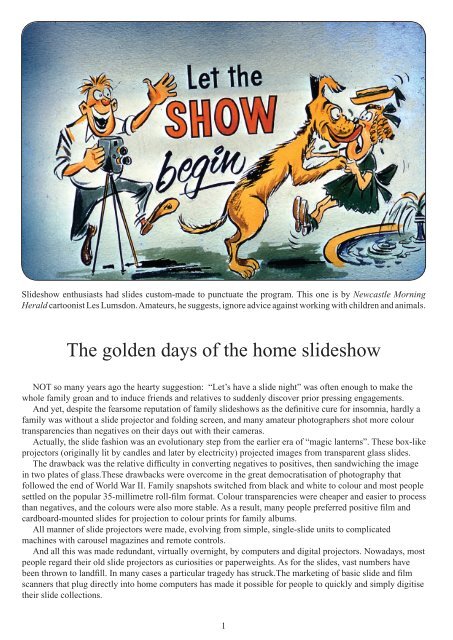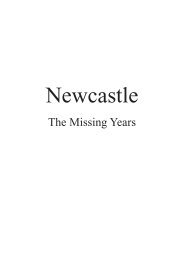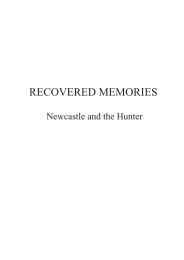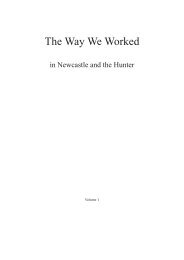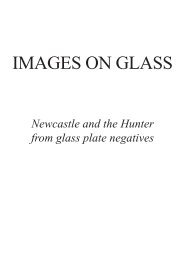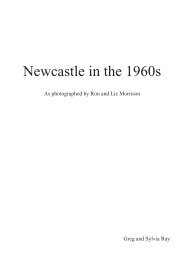Pages from Newcastle Slideshow2014
Create successful ePaper yourself
Turn your PDF publications into a flip-book with our unique Google optimized e-Paper software.
Slideshow enthusiasts had slides custom-made to punctuate the program. This one is by <strong>Newcastle</strong> Morning<br />
Herald cartoonist Les Lumsdon. Amateurs, he suggests, ignore advice against working with children and animals.<br />
The golden days of the home slideshow<br />
NOT so many years ago the hearty suggestion: “Let’s have a slide night” was often enough to make the<br />
whole family groan and to induce friends and relatives to suddenly discover prior pressing engagements.<br />
And yet, despite the fearsome reputation of family slideshows as the definitive cure for insomnia, hardly a<br />
family was without a slide projector and folding screen, and many amateur photographers shot more colour<br />
transparencies than negatives on their days out with their cameras.<br />
Actually, the slide fashion was an evolutionary step <strong>from</strong> the earlier era of “magic lanterns”. These box-like<br />
projectors (originally lit by candles and later by electricity) projected images <strong>from</strong> transparent glass slides.<br />
The drawback was the relative difficulty in converting negatives to positives, then sandwiching the image<br />
in two plates of glass.These drawbacks were overcome in the great democratisation of photography that<br />
followed the end of World War II. Family snapshots switched <strong>from</strong> black and white to colour and most people<br />
settled on the popular 35-millimetre roll-film format. Colour transparencies were cheaper and easier to process<br />
than negatives, and the colours were also more stable. As a result, many people preferred positive film and<br />
cardboard-mounted slides for projection to colour prints for family albums.<br />
All manner of slide projectors were made, evolving <strong>from</strong> simple, single-slide units to complicated<br />
machines with carousel magazines and remote controls.<br />
And all this was made redundant, virtually overnight, by computers and digital projectors. Nowadays, most<br />
people regard their old slide projectors as curiosities or paperweights. As for the slides, vast numbers have<br />
been thrown to landfill. In many cases a particular tragedy has struck.The marketing of basic slide and film<br />
scanners that plug directly into home computers has made it possible for people to quickly and simply digitise<br />
their slide collections.<br />
1


